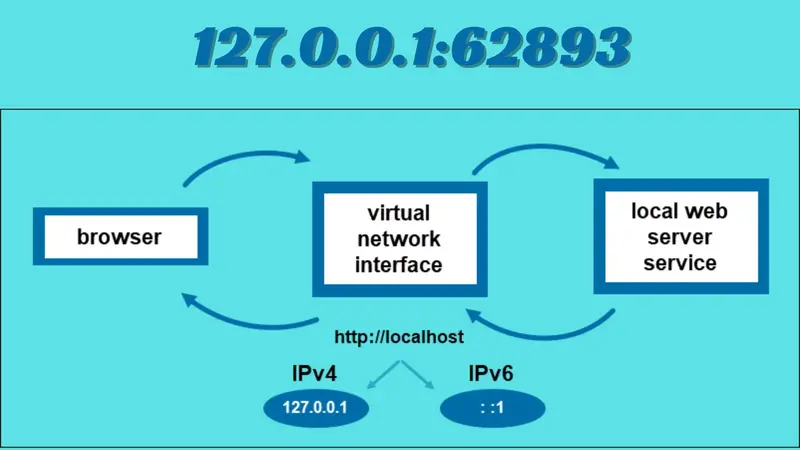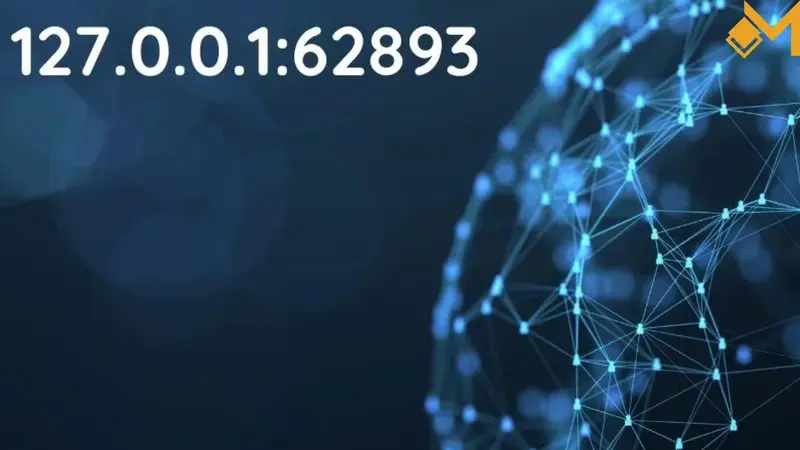In the world of networking and computer science, certain IP addresses and port numbers hold significant importance. One such combination is 127.0.0.1:62893. This guide will provide an in-depth understanding of what this combination means, its significance, functionality, common issues, and troubleshooting methods. Whether you are a network administrator, developer, or IT enthusiast, this article aims to equip you with the knowledge to effectively use and troubleshoot 127.0.0.1:62893.
What is 127.0.0.1?
127.0.0.1 serves as the loopback IP address. In networking, you use a loopback address to establish a connection to the same machine or computer. It is a crucial tool for testing and development as it allows the user to test network applications and services locally without needing external network connectivity.
IPv4 Loopback Address
In IPv4 (Internet Protocol version 4), the loopback address is typically represented as 127.0.0.1. This address belongs to the block of addresses from 127.0.0.0 to 127.255.255.255, reserved for loopback purposes. Any IP packet sent to a loopback address is rerouted by the network device back to itself.
IPv6 Loopback Address
It (Internet Protocol version 6), the successor to IPv4, introduces a more extensive address space and includes its loopback address, which is::1. IPv6 uses 128-bit addresses compared to IPv4’s 32-bit addresses, providing a significantly larger pool of IP addresses. The IPv6 loopback address (::1) serves the same purpose as 127.0.0.1 in IPv4, enabling local testing and development.

Significance of the Loopback Address
- Testing and Development: The loopback address allows developers to run and test server applications on their own machines. This is essential for debugging and ensuring that applications work correctly before they are deployed in a live environment.
- Security: Using the loopback address keeps the data local to the machine, which means it is not exposed to external networks. This provides an added layer of security during the development and testing phases.
- Network Diagnostics: Network administrators use the loopback address to diagnose network problems. Tools like ping and traceroute can test network paths and connectivity issues locally.
What is a Port Number?
A port number is a communication endpoint that allows different applications or services to coexist on a single IP address. When data is sent over the internet, it is directed to a specific IP address and port number. For example, web traffic typically uses port 80 for HTTP and port 443 for HTTPS.
Ports range from 0 to 65535 and are divided into three categories:
- Well-Known Ports (0-1023): These are reserved for common services and protocols (e.g., HTTP, FTP, SMTP).
- Registered Ports (1024-49151): These are registered with the Internet Assigned Numbers Authority (IANA) for specific services and applications.
- Dynamic/Private Ports (49152-65535): These are used for temporary or private connections.
Understanding Port 62893
Port 62893 falls within the dynamic or private range, so no specific service or application assigns it. Instead, it serves for temporary communication sessions, often in testing and development environments.
Why Use Port 62893?
- Flexibility: Dynamic ports like 62893 are not reserved for any specific service, making them flexible for various applications.
- Isolation: Using a high port number reduces the risk of conflicts with well-known services, ensuring that the test environment remains stable.
- Temporary Sessions: These ports are ideal for temporary sessions and debugging purposes, allowing developers to test different scenarios without affecting live services.
Applications of 127.0.0.1:62893
- Local Web Development: Developers often use 127.0.0.1 with a dynamic port like 62893 to run local web servers. This setup allows them to test web applications locally before deploying them to production servers.
- Network Diagnostics: Tools such as ping and traceroute can use loopback addresses and specific ports to diagnose network issues. This helps in isolating problems and ensuring that the network stack is functioning correctly.
- Service Testing: During the development of network services, using 127.0.0.1:62893 allows for thorough testing without interfering with live network traffic.
Example Scenario
Imagine you are developing a new web application. You set up a local server on your machine using 127.0.0.1:62893. This setup ensures that only your machine can access the server, reducing security risks and providing a controlled environment for testing. Once you are satisfied with the performance and functionality, deploy the application to a live server.
Common Issues and Troubleshooting
While using 127.0.0.1:62893 is generally straightforward, you might encounter some common issues. Here are a few troubleshooting tips:
- Service Not Running: If you receive an error message stating “Disconnected from the target VM, address: 127.0.0.1:62893,” it often indicates that the service or application is not running. Ensure that the relevant service is active.
- Port Conflicts: Dynamic ports can sometimes conflict with other services. Verify that port 62893 is not being used by another application. You can use tools like
netstatto check for active connections. - Firewall Settings: Firewalls can block certain ports, preventing applications from communicating. Ensure that your firewall settings allow traffic through port 62893.
- Incorrect Configuration: Double-check your configuration files to ensure that the IP address and port number are correctly specified.
Detailed Troubleshooting Steps
- Verify Service Status:
- On Windows: Open the Task Manager and look for the service in the Processes tab.
- On Linux/Mac: Use the command
ps aux | grep [service-name]to check if the service is running.
- Check Port Usage:
- On Windows: Open Command Prompt and run
netstat -an | find "62893". - On Linux/Mac: Use the command
lsof -i :62893to check if the port is in use.
- On Windows: Open Command Prompt and run
- Adjust Firewall Settings:
- On Windows: Go to Control Panel > System and Security > Windows Defender Firewall > Advanced Settings, and add a new inbound rule for port 62893.
- On Linux: Use the command
sudo ufw allow 62893to allow traffic through the port.
- Review Configuration Files:
- Ensure that the configuration files for your application or service specify 127.0.0.1:62893 correctly. Common configuration files include
server.conf,application.yml, ornginx.conf.
- Ensure that the configuration files for your application or service specify 127.0.0.1:62893 correctly. Common configuration files include
Security Considerations
While using 127.0.0.1 for local testing is generally secure, exposing port 62893 to external networks can pose security risks. Here are some best practices to ensure security:
- Limit Access: Ensure that port 62893 is only accessible from the local machine. Avoid exposing it to external networks unless absolutely necessary.
- Use Strong Authentication: If you need to expose the port externally, implement strong authentication mechanisms to prevent unauthorized access.
- Monitor Traffic: Regularly monitor network traffic to and from port 62893 to detect any unusual activity.
- Update Software: Keep your software and services up to date to protect against known vulnerabilities.
Conclusion
Understanding the significance and functionality of 127.0.0.1:62893 is essential for developers, network administrators, and IT professionals. This combination of the loopback IP address and a dynamic port number provides a powerful tool for local testing, development, and diagnostics. By following best practices and troubleshooting tips, you can effectively use 127.0.0.1:62893 to enhance your development workflow and ensure secure, reliable network operations.
The loopback addresses 127.0.0.1 and port 62893 offer a safe and isolated environment for testing and development. While commonly used in local setups, it is important to ensure proper configuration and security measures to avoid potential risks. Whether you are running a local server, diagnosing network issues, or developing new applications, understanding and utilizing 127.0.0.1:62893 will help you achieve your goals efficiently and securely. If you have any questions, Please visit the Pulse Life Magazine.
